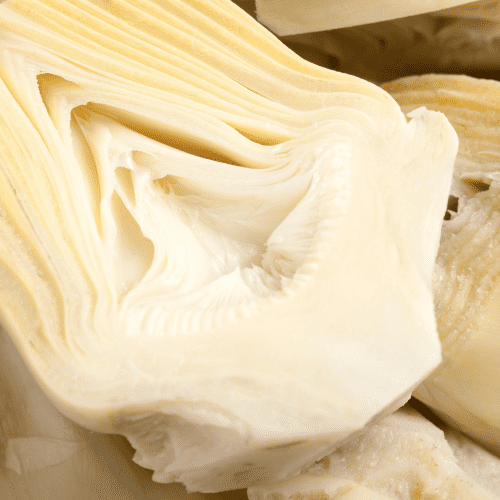Artichoke hearts are a popular ingredient in many dishes. However, they can be difficult to find at times or expensive if you’re not getting them on sale. If you’re looking for some substitutes that will work just as well in your recipes, here are 10 great artichoke heart substitutes!
What does artichoke hearts taste like?
Artichokes are surprisingly tasty and delightful. They taste a little bit like celery, but with an undercurrent of asparagus-like flavor that’s detectable in broccoli too; meanwhile the texture is so soft it feels almost eggplant-esque!
Cardone

Cardone, also known as cardboard. Cardone is a tough plant with celery-like texture and an artichoke like flavor that must be cooked before eating.
Cardone has a tangy and slightly sweet flavor which can be used as an alternative to it in toppings and sauces.
Jerusalem artichoke

Jerusalem artichokes are a delicious and healthy root vegetable with a complex but mild flavor profile.
When uncooked The Jerusalem artichoke has a crunchy texture and a sweet clean nutty flavor.
When cooked, their flavor is often compared to other vegetables like potatoes, asparagus, artichokes and celery. Leaving the skin on will add a stronger earthy taste that you might enjoy!
Canned Artichoke Hearts
If you still want to use canned artichokes but don’t want to buy those expensive jars at the grocery store (or if you live somewhere without an Aldi), check your local Walmart instead.
They often have great deals on canned vegetables like these!
Brussel sprouts

It’s always a good idea to have an alternate cooking plan in case you just can’t find what you are looking for.
Brussel sprouts, as it turns out, make great substitutes if some artichokes aren’t available and especially when you’re cooking butter or garlic sauce.
Brussel sprouts are just as delicious and flavorful!
The heart of the palm

The heart of the palm can be harvested from the inner part of the palm and some pea trees. Fresh versions are only found in jars but it’s often used in sauces as a substitute for artichoke.
Heart of palm’s flavor lies somewhere between white asparagus, artichoke heart, and water chestnuts with its creamy tender flesh being easy to make purees or dips with for any occasion!
Asparagus
Asparagus is one of those vegetables that can be prepared in a variety of ways. When you bake and season asparagus with lemon juice and olive oil it tastes more like beans, but when fried the taste resembles artichokes even though they have different flavors since artichokes are sweeter and nuttier than asparagus.
Chayote squash
Chayote can be used chopped or sliced. Chopped as toppings, for example on top of a salad to add an instant crunch! Or you may want to slice it when your dish needs sliced artichokes without adjusting the recipe.
Kohlrabi

Kohlrabi is a member of the cabbage family and has an unmistakable sweet-but-peppery flavor profile. Kohlrabi’s taste, texture, and appearance are similar to those of broccoli stems; therefore it should be picked when firm with no signs of squishiness present.
Jicama
Jicama is a crunchy, a sweet vegetable that can be used as a substitute for any recipe that calls for artichoke hearts. The challenge though? It’s hard to find at most major supermarkets! Head over to an Asian grocer where they’ll usually have this item if it’s available during the season.
Napa Cabbage

As an oblong shaped cabbage, Napa cabbage is a key ingredient used in many Asian dishes. It’s flavor can be mild and sweet when cooked or become slightly tart depending on the preparation method and cooking time. Water content makes this vegetable moist, juicy soft to eat that you’ll find at any grocery store for its affordability as well as health benefits it provides!
Cooked artichoke heart recipe
Cooked artichoke hearts

Most of the artichokes used in most kitchens come from cans because most people are unsure about how to prepare fresh artichokes. However, it is actually quite easy and the result is fantastic. The artichoke will quickly play a leading role in your life, as they can be further used in many different ways.
- 1 green artichoke
- 0.5 lemon
Place the artichoke on the edge of the work surface and twist off the stem, removing all the hard fibres at the same time.
Use a sharp knife or electric knife and remove approximately 60% off the top. You will see the hay.
Cut away all the leaves around the heart, leaving it clean
Use a spoon to remove the hay.
Rub a halved lemon all over the artichoke. You can place them in water with a little lemon juice but this could affect the flavour.
Blanche the artichoke hearts in salted water until tender.
They are now ready to be used for other compositions.





